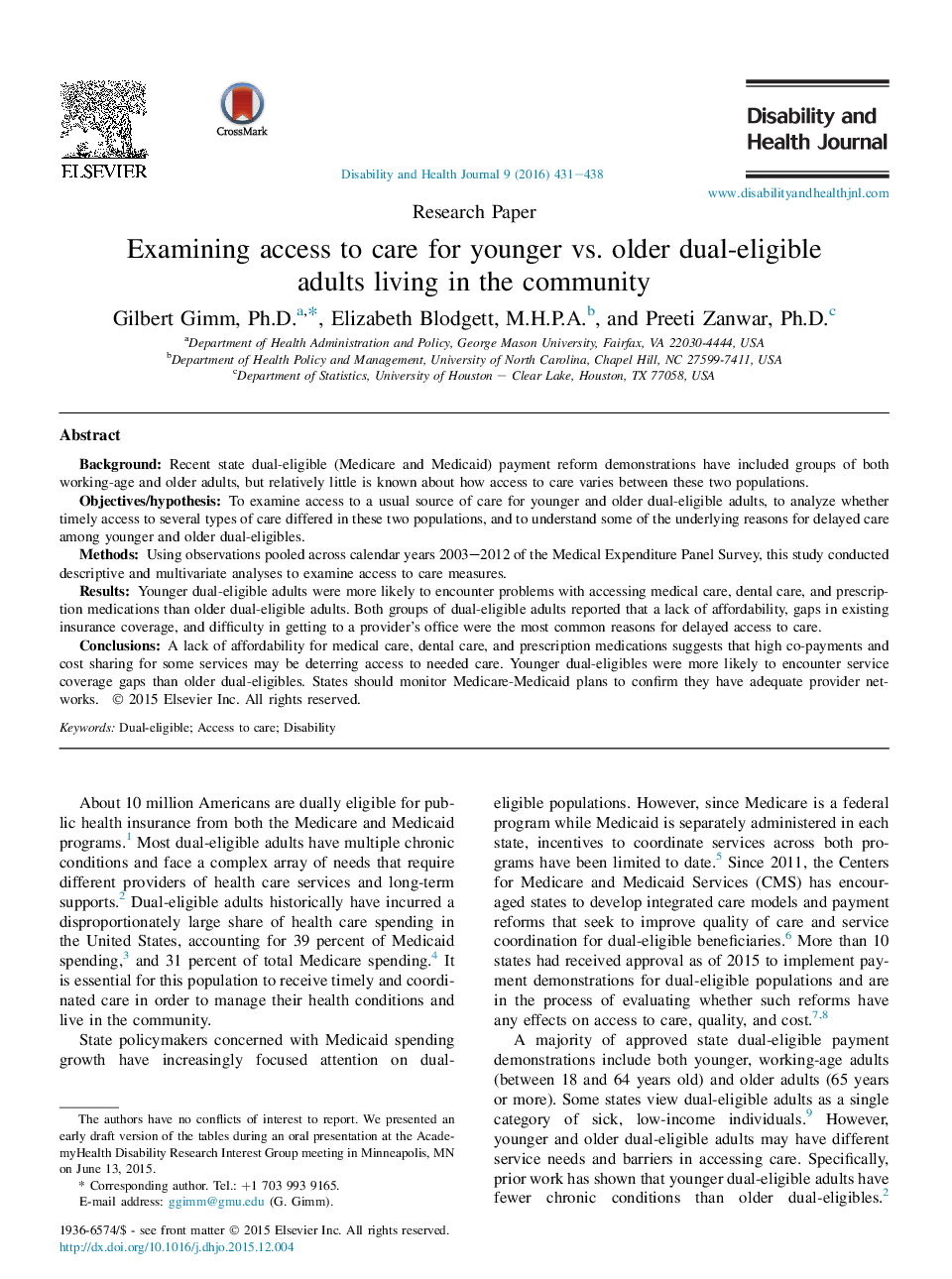| Article ID | Journal | Published Year | Pages | File Type |
|---|---|---|---|---|
| 4197127 | Disability and Health Journal | 2016 | 8 Pages |
BackgroundRecent state dual-eligible (Medicare and Medicaid) payment reform demonstrations have included groups of both working-age and older adults, but relatively little is known about how access to care varies between these two populations.Objectives/hypothesisTo examine access to a usual source of care for younger and older dual-eligible adults, to analyze whether timely access to several types of care differed in these two populations, and to understand some of the underlying reasons for delayed care among younger and older dual-eligibles.MethodsUsing observations pooled across calendar years 2003–2012 of the Medical Expenditure Panel Survey, this study conducted descriptive and multivariate analyses to examine access to care measures.ResultsYounger dual-eligible adults were more likely to encounter problems with accessing medical care, dental care, and prescription medications than older dual-eligible adults. Both groups of dual-eligible adults reported that a lack of affordability, gaps in existing insurance coverage, and difficulty in getting to a provider's office were the most common reasons for delayed access to care.ConclusionsA lack of affordability for medical care, dental care, and prescription medications suggests that high co-payments and cost sharing for some services may be deterring access to needed care. Younger dual-eligibles were more likely to encounter service coverage gaps than older dual-eligibles. States should monitor Medicare-Medicaid plans to confirm they have adequate provider networks.
